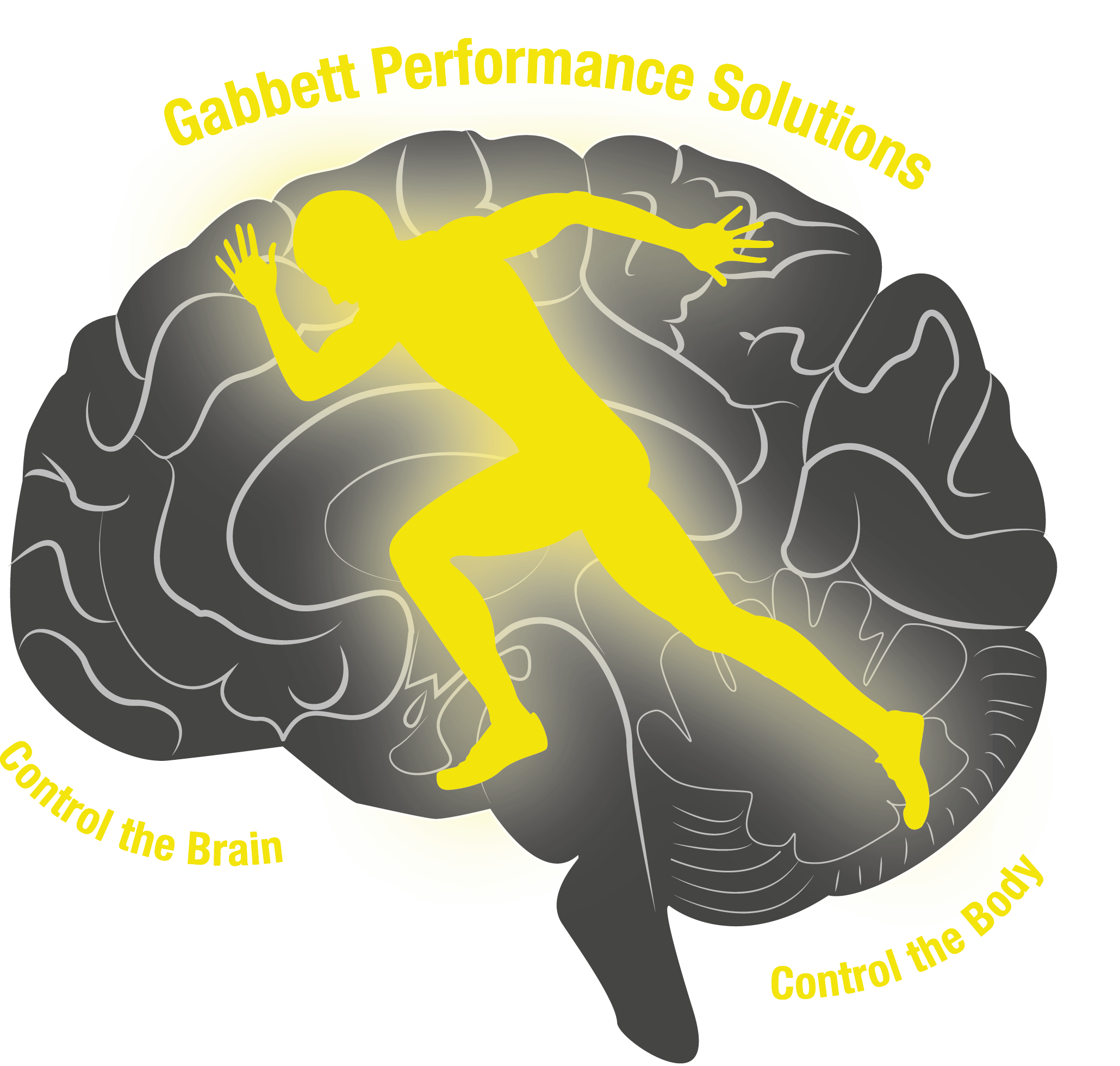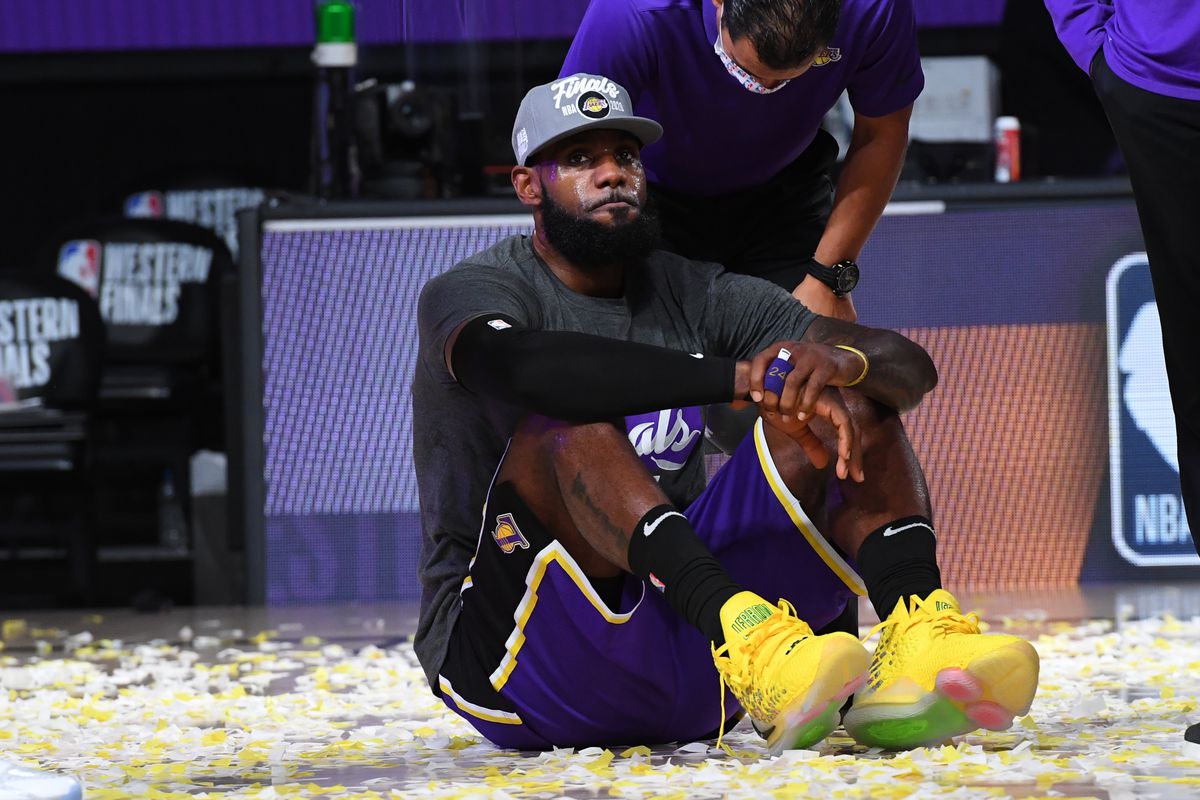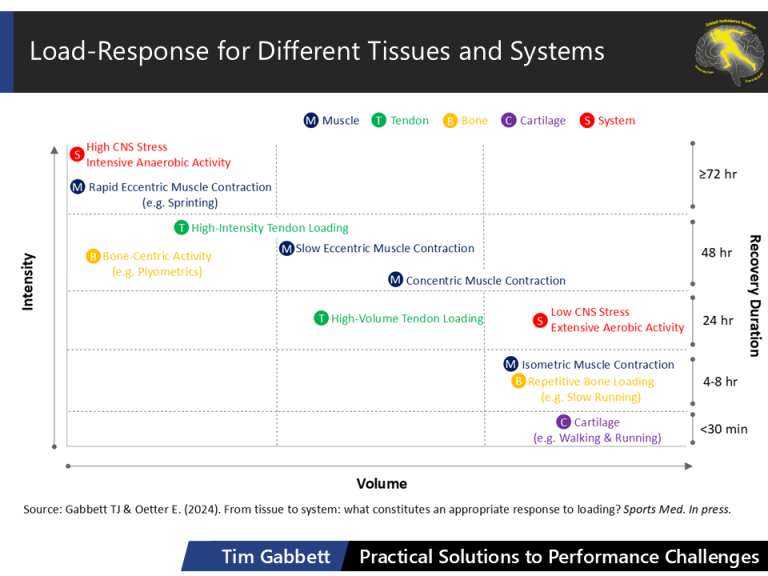- How is it that Lebron James has such Great Longevity?
At the start of the season, Lebron James had played over 19,000 more NBA minutes than the next closest player, Kevin Durant. If Lebron stopped playing today, it would take Kevin Durant around 7 seasons, playing 35 minutes every game to catch up. This is a combination of many factors – Lebron joined the league straight out of high school at age 18 and has played a long and relatively injury-free career. Lebron is also known to have had excellent work ethic, investing an incredible amount of time and energy into his body. But all that training and playing load has to take a toll at some point, right? In this blog we’ll discuss what we know about the science of long-term training load, and how this applies to elite athletes like Lebron.

2. What do we know about Chronic Load?
The vast majority of research examining workload and injury has been performed on adult athletes. In these studies, higher chronic load has been associated with (1) better performance [2, 5] and reduced injury risk [4, 5]. This appears to differ from the results of adolescents where a ‘U’-shaped dose-response relationship exists among training load, injury and wellbeing [6, 8]; both low and high chronic loads increases the risk of negative outcomes in younger athletes.
A limitation of the majority of training load research is that it has been conducted on small sample sizes, typically involving single teams. As such, it is very difficult to extrapolate data on all load-related injuries to those that involve specific tissue types. In the only long-term study that has been conducted on a large sample size, Orchard and colleagues [9] studied the loading profiles associated with injury in elite cricket fast bowlers (Figure 2). Their study highlighted the complex interplay of acute and chronic load with injury. For example, both high and low acute workloads increased risk of tendon injuries. Perhaps more interestingly, low chronic workloads increased the risk of muscle injuries, while high workloads over the previous season and course of a players’ career increased the risk of joint injuries. These findings suggest that while high chronic load might protect players against injury to some tissue types (e.g. muscle), other tissue types (e.g. joint) might “pay the price” towards the end of the athletes’ career.

3. How much is enough and how much is too much?
If we continue with Lebron James as our example, we can speculate that a combination of the “right” circumstances, the “right” load, at the “right” time helped develop the conditions to foster a high chronic load. It is likely that his athletic pursuits in childhood and adolescence contributed to his high load capacity in adulthood. For example, it is well established that weight-bearing physical activity during childhood and early puberty has a positive, and possibly enduring effect on bone strength [7], while athletes who begin strength training in their formative years have greater muscular strength and power adaptations than those who begin strength training later, even when these athletes are matched for strength training age [1]. Furthermore, after a certain age, the eccentric heart hypertrophic adaptation (thus maximal stroke volume) seems to be fixed, thus becoming a potential limiter in peak aerobic performance [3].
Comparing Lebron to other NBA forwards around his age proves the point that there is substantial variance in how athlete’s respond to load. While Lebron has developed a high chronic load and barely ever missed more than a few weeks at a time, other players have not been so fortunate. Kevin Durant has recently missed significant time after playing substantial regular and post-season minutes for several years. Other players never make their way to longevity. Take Chandler Parsons, who excited the league in his early career but has sadly struggled with injuries since. A ‘one size fits all’ approach does not work with training – it’s important to understand the nuance from athlete to athlete.
References
- Baker D. The effects of systematic strength and power training during the formative training years: A comparison between younger and older professional rugby league players. Strength Cond Coach, 2005;11:9-11.
- Foster C, Daines E, Hector L, Snyder AC, Welsh R. Athletic performance in relation to training load. Wisc Med J, 1996;95:370-374.
- Hoogsteen J, Hoogeveen A, Schaffers H, et al. Left atrial and ventricular dimensions in highly trained cyclists. Int J Cardiovasc Imaging, 2003;19:211-217.
- Hulin BT, Gabbett TJ, Blanch P, Chapman P, Bailey D, Orchard JW. Spikes in acute workload are associated with increased injury risk in elite cricket fast bowlers. Br J Sports Med, 2014;48:708-12.
- Hulin, B.T., Gabbett, T.J., Pickworth, N.J., Johnston, R.D., and Jenkins, D.G. Relationships among PlayerLoadTM, high-intensity intermittent running ability and injury risk in professional rugby league players. Int J Sports Physiol Perform, 2019; in press.
- Lathlean TJH, Gastin PB, Newstead SV, Finch CF. Absolute and relative load and injury in elite junior Australian football players over one season. Int J Sports Physiol Perform, 2019; in press.
- MacKelvie KJ, Khan KM, McKay HA. Is there a critical period for bone response to weight-bearing exercise in children and adolescents? A systematic review. Br J Sports Med, 2002;36:250-257.
- Merglen A, Flatz A, Belanger RE, Michaud PA, Suris JC. Weekly sport practice and adolescent well-being. Arch Dis Child 2014;99:208-210.
- Orchard JW, Blanch P, Paoloni J, Kountouris A, Sims K, Orchard JJ, Brukner P. Cricket fast bowling workload patterns as risk factors for tendon, muscle, bone and joint injuries. Br J Sports Med, 2015;49:1064-8.





